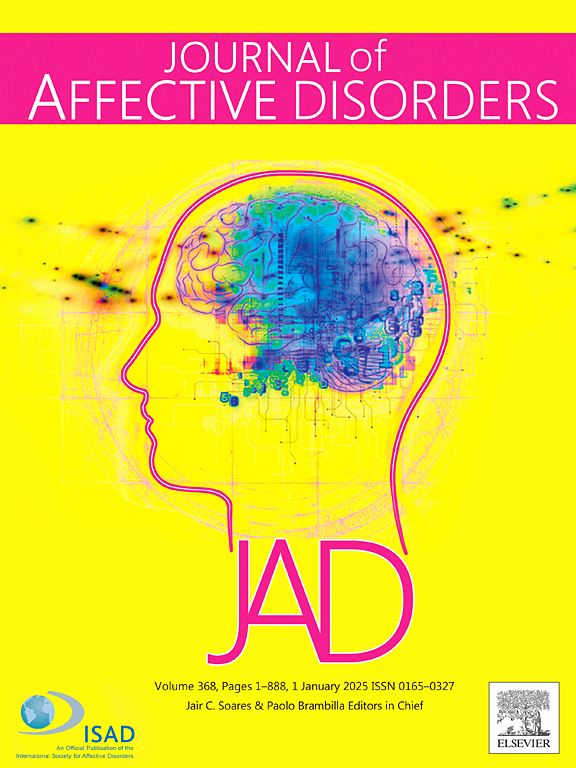Health risk behaviors, depressive symptoms and suicidal ideation among college students: A latent class analysis in middle China
IF 4.9
2区 医学
Q1 CLINICAL NEUROLOGY
引用次数: 0
Abstract
Purpose
Previous studies have demonstrated the relationship between health risk behaviors and mental health, but little is discussed among college students. The current study aims to examine clusters of health risk behaviors and their correlation with depressive symptoms and suicidal ideation among Chinese college students.
Methods
Data was obtained from the 2022 Surveillance for Common Diseases and Health Risk Factors among Students project conducted by the Hubei Province of the Centers for Disease Control and Prevention. Latent class analysis (LCA) was conducted based on health risk behaviors, including diet (breakfast skipping, consumption of sweetened beverages, fast food, milk, soymilk and yogurt), physical activities (physical exercise and sedentary), adverse experiences (verbal violence and emotional neglect), substance use (smoking and drinking), sleep, and unprotected sex behaviors. Mental health was assessed by the depressive symptoms and suicidal ideation. Multivariate logistic regression evaluated the correlation between mental health and health risk behaviors.
Results
Among the 6372 Chinese college students, most had sedentary behavior, physical inactivity and unhealthy diet, and > 60 % had more than two health risk behaviors. We further identified four classes of health risk behaviors using LCA. Class 1 (low-risk group, 25.1 %) was unlikely to engage in health-risk behaviors. Class 2 (moderate-risk group, 66.9 %) showed the lowest or second lowest probabilities of most health risk behaviors. Class 3 (High-risk-substance abuse/unprotected sex, 5.2 %) presented the highest probabilities of smoking, drinking, irregular breakfast, unhealthy diet and unprotected sex. Class 4 (High-risk-adverse experiences, 2.8 %) showed the highest probabilities of verbal violence, emotional neglect and insufficient sleep. The high-risk (adverse experiences) class had the highest odds of both depressive symptoms and suicidal ideation, followed by Class 3 and Class 2. Moreover, single-parent and intergenerational families were positively associated with mental health problems in female college students.
Limitations
Due to the cross-sectional study, we cannot identify the changes in different developmental stages.
Conclusion
Different intervention strategies should be customized based on clustering patterns of health risk behaviors in the prevention of depression and suicide among college students.
求助全文
约1分钟内获得全文
求助全文
来源期刊

Journal of affective disorders
医学-精神病学
CiteScore
10.90
自引率
6.10%
发文量
1319
审稿时长
9.3 weeks
期刊介绍:
The Journal of Affective Disorders publishes papers concerned with affective disorders in the widest sense: depression, mania, mood spectrum, emotions and personality, anxiety and stress. It is interdisciplinary and aims to bring together different approaches for a diverse readership. Top quality papers will be accepted dealing with any aspect of affective disorders, including neuroimaging, cognitive neurosciences, genetics, molecular biology, experimental and clinical neurosciences, pharmacology, neuroimmunoendocrinology, intervention and treatment trials.
 求助内容:
求助内容: 应助结果提醒方式:
应助结果提醒方式:


